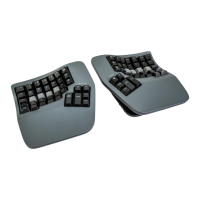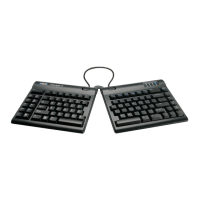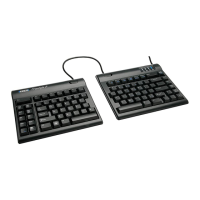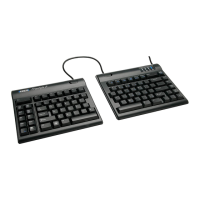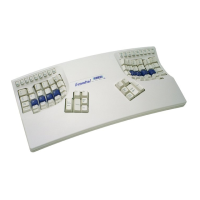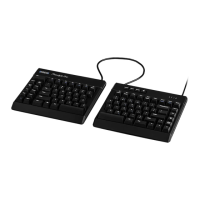4
3.4 Simple Text Files ONLY
Do not save configuration files in the Rich Text Format (.rft) as special characters can cause syntax errors.
3.5 Firmware update may be required
Some of the features described in this guide may require a firmware update. Download firmware and get
installation instructions here: https://kinesis-ergo.com/support/adv360/#firmware-updates
4.0 Direct Programming Layouts
The 360 features 9 configurable Profiles, each with its own corresponding “layout” (1-9). The nine default
layouts are saved as separate .txt files in the “layouts” subfolder on the v-Drive. Only custom remaps and
macros are saved to the file, so if no changes have been made to a layout, the file will be empty and the
keyboard performs “default” actions. Users can either write code from scratch or edit existing code using the
syntax rules described below. Note: Deleting a layout file will permanently delete its stored remaps & macros,
but the keyboard will automatically regenerate a blank layout file.
Note: Profile 0 is non-programmable and thus does not have a corresponding layout.txt file.
4.1 File Naming Convention
Only the nine numbered layouts can be loaded to the Advantage360. Additional “backup” layouts can be
saved as .txt files with descriptive names, but they cannot be loaded to the keyboard without renaming them
first.
4.2 Syntax Overview– Position & Action Tokens
Remaps and macros are encoded in a layout file using a proprietary syntax. Each of the keys on the
keyboard (other than the SmartSet Key) has been assigned a unique “Position” token used to identify that key
for programming in either layer (see Position Token Map in Appendix A).
Each keyboard & mouse action supported by the 360 has been assigned a unique “Action” token
corresponding to a standard USB “scan code”.
View supported actions and tokens here: https://kinesis-ergo.com/support/adv360/#manuals
To successfully re-program a key, the user must use the syntax to designate the physical key (via a Position
Token) and assign one or more key actions (via Action Tokens). The “>“ symbol is used to separate Position
Tokens from Actions Tokens. Each individual token is surrounded by brackets. Examples:
• Remaps are encoded with Square Brackets: [position]>[action]
• Macros are encoded with Curly Brackets: {trigger key position}{modifier co-trigger}>{action1}{action2}…
Write your remap under the desired “Layer Header” to assign it to that layer
<base>
<keypad>
<function1>
<function2>
<function3>
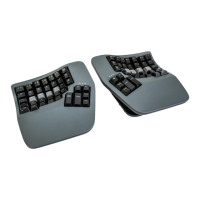
